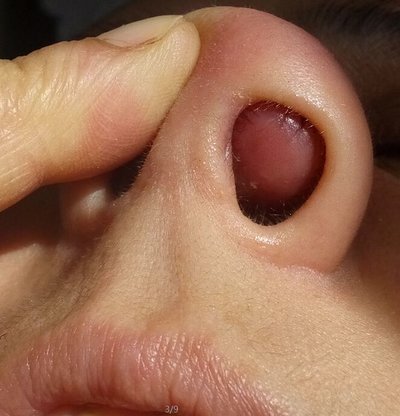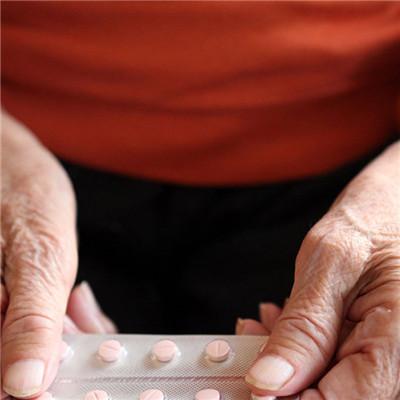What symptom does uterine isthmus myoma have?
summary
Most patients have no obvious symptoms, only occasionally found in pelvic examination. If there are symptoms, it is closely related to the location, growth rate and degeneration of myoma. What symptom does uterine isthmus myoma have? Let's talk about it.
What symptom does uterine isthmus myoma have?
(1) Uterine bleeding: uterine bleeding is the most common symptom of uterine fibroids. The clinical manifestations are menorrhagia, periodic bleeding, increased menstrual volume, often accompanied by prolonged menstruation, which is the most common type of bleeding; More frequent menstruation, shorter menstrual cycle and more menstrual volume; Irregular bleeding, menstruation loss of normal periodicity, lasting for a long time, more or less, and dripping constantly, mostly seen in submucosal myoma. Submucosal myoma and intramuscular myoma are the most common causes of uterine bleeding, while subserosal myoma rarely causes uterine bleeding. According to the literature, the incidence of uterine bleeding in submucosal myoma, intermuscular myoma and subserosal myoma was 89.5% - 100%, 74% - 77.7% and 33.3% - 36% respectively. There are many reasons for uterine bleeding: 1. With the increase of uterus, the area of uterine cavity endometrium will inevitably increase. When menstruation, the shedding surface of endometrium is large, and the repair time is relatively long, resulting in more bleeding and longer menstruation. (2) due to the existence of myoma between the muscle walls, it prevents the uterus from controlling bleeding with effective uterine contraction, resulting in massive bleeding. (3) hysteromyoma often occurs in the late reproductive age, when menopause, some patients with small fibroids and menorrhagia, may be caused by dysfunctional uterine bleeding, after curettage examination of endometrium can be determined. In addition, some patients with intramuscular myoma are not large, and the endometrial pathology report of curettage is secretory endometrium, but there are bleeding symptoms, or some patients with subserosal myoma also have uterine bleeding symptoms, which are difficult to explain by the increase of endometrial area, poor uterine contraction, or dysfunctional uterine bleeding, More and more attention has been paid to the congestion and dilation of endometrial venous plexus. It is suggested that there are abundant blood vessels in the submucous, intramuscular and endometrial areas. The growth of myoma may squeeze the veins near the tumor, leading to congestion and expansion of the endometrial venous plexus, resulting in menorrhagia. The most prominent clinical symptom of submucosal hysteromyoma is uterine bleeding. It is believed that the bleeding is caused by the ulcer on the surface of the myoma. However, submucosal myoma with ulcer is rare, and clinical abnormal bleeding is common. Therefore, endometrial venous plexus congestion and dilatation are more powerful explanations. Sometimes, the bleeding of the inflamed veins on the surface of submucous myoma of uterus can directly lead to massive bleeding. The above explanations are all reasonable and not contradictory. Combined with specific patients, the cause of uterine bleeding may be the result of a certain factor or the synergistic effect of several factors. In recent years, it is believed that the dysfunction of basic fibroblast growth factor (bFGF), vascular endothelial growth factor (VEGF), epidermal growth factor (EGF) and other growth factors or their receptors produced by hysteromyoma and muscle wall tissue has a direct impact on vascular function and angiogenesis, resulting in abnormal uterine vascular structure and menorrhagia.

(2) Abdominal mass: the uterus is located in the deep part of the pelvic cavity, and there is no mass in the abdomen at the beginning of myoma. When the uterine fibroids gradually increase, so that the uterus more than 3 months of gestation size, or located in the bottom of the uterus subserosal fibroids easier to touch from the abdomen. The mass is located in the middle part of the lower abdomen. It is solid and movable, but it has little activity, no tenderness and slow growth. If the abdominal wall of the patient is thick, the uterus is enlarged, or even exceeds the pelvic cavity for 4-5 months, the patient is still difficult to find it by himself. Therefore, patients with uterine fibroids due to abdominal masses were less. Huge submucous myoma prolapses out of the vagina, and patients can seek medical treatment for prolapsed tumor of vulva. Most tumors are accompanied by infection and necrosis, which is rare in recent years.

(3) Vaginal discharge: Uterine submucous myoma or cervical submucous myoma can cause leucorrhea increase. Once the tumor infection can have a large number of purulent leucorrhea, if there is ulceration, necrosis, bleeding can be bloody or purulent odor of vaginal discharge.

matters needing attention
In order to avoid the deterioration of uterine fibroids, patients must be treated in the early stage of the disease. If the uterine fibroids are less than 5cm and the symptoms are not obvious, traditional Chinese medicine can be used for conservative treatment. Age is close to menopause, and there is no physical discomfort, can continue to observe. When menstruation comes back, not menstruation, ovarian dysfunction, decreased sex hormones, fibroids no nutritional supply, it will gradually shrink, or even disappear. Usually keep a happy mood, eat more light vegetables and fruits. Healthy and regular life, do not be picky.














